-
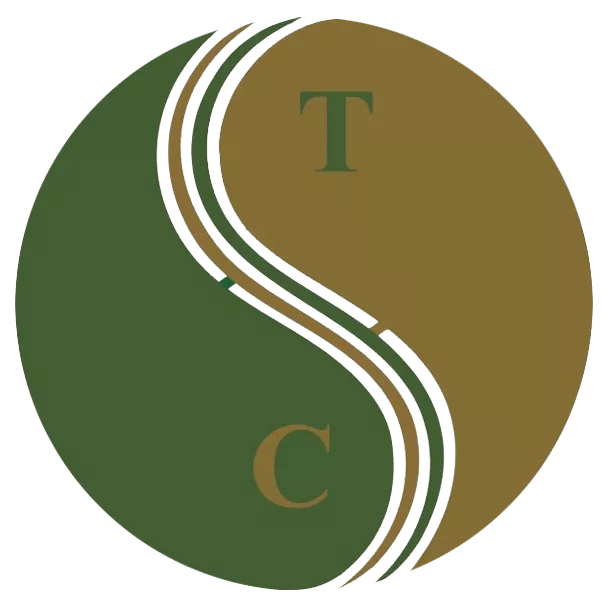 Art of Wellness Acupuncture & Traditional Chinese Medicine (TCM)11704 Wilshire Blvd, Suite 295, Los Angeles, CA, 90025
Art of Wellness Acupuncture & Traditional Chinese Medicine (TCM)11704 Wilshire Blvd, Suite 295, Los Angeles, CA, 90025
myartofwellness@gmail.com310-451-5522 Office Hours
MonClosedTue7:30 am --4 pmWed7:30 am --4 pmThu7:30 am -- 4 pmFri7:30 am -- 4 pmSat7:30 am -- 4 pmSunClosedOur office opens from Tuesdays to Saturdays 7:30 am to 4 pm, will be closed on Memorial day, Independent day, Labor day, Thanksgiving day, Christmas and New year.
-
Recent Posts
- How to Treat MCAS With Acupuncture and TCM
- How to Treat Shin Splints With Acupuncture and TCM
- How to Treat Dysautonomia With Acupuncture and TCM
- How to Treat Myofascial Pain Syndrome With Acupuncture and TCM
- How to Treat Costochondritis With Acupuncture and TCM
- How to Treat Ankylosing Spondylitis With Acupuncture and TCM
- How to Treat Gastroparesis With Acupuncture and TCM
- How To Treat Sleep Apnea With Acupuncture and TCM
- How To Treat Baker’s Cyst With Acupuncture and TCM
- How to Treat Sinusitis With Acupuncture and TCM
- How To Treat Sjogren’s Disease With Acupuncture and TCM
- How to Treat Raynaud’s Syndrome With Acupuncture and TCM
- Sign up to receive news and updates and get my free report:“The Top 10 Reasons to Try Acupuncture”

Uncategorized
How to Treat Vitiligo With Acupuncture and TCM
by Qineng Tan, L.Ac., Ph.D. and Xiaomei Cai, L.Ac., Ph.D.

White patches on skin, white spots on face? Graying hair? White patches of skin can be a sign of Vitiligo. Vitiligo is a chronic autoimmune disease that affects the melanin, or pigment, in the skin. Acupuncture and TCM offer a holistic, complementary vitiligo treatment that can help with repigmentation.
Vitiligo occurs when the pigmentation of your skin changes, with white patches on face or other parts of the body. This usually happens because of an autoimmune disorder that affects the cells that create pigment in the skin, hair, and eyes.
Vitiligo can show up in different ways. Possible signs of vitiligo include:
- Lighter patches of skin on face, arms, hands, and/or feet, white patches on skin
- Patches can be pink, tan, or white
- Loss of pigmentation on lips and/or inside mouth
- Loss of pigmentation on or inside the nose
- White patches of skin are itchy sometimes, usually when they are spreading
- Premature graying hair, hair turning gray
- A streak of white hair on scalp develops
- Eyelashes turn white, or eyebrows turn white
- Eye color changes, may affect eyesight
- Inner ear problems, can lead to hearing loss
- Anxiety and depression due to changes in appearance
While vitiligo is not considered harmful, these changes in outward appearance can have a serious impact on the way a person feels about themselves. Vitiligo disease treatment with acupuncture and TCM can help not only with repigmentation, but can help address the underlying causes of autoimmune disease, and mental health concerns, all at the same time.
What Causes Vitiligo?
White patches on skin happen when cells called melanocytes, which produce pigment, either stop functioning correctly or die.
Medical research has not yet determined exactly why some people get vitiligo, but it is generally considered to occur because of an autoimmune condition. When a person has an autoimmune disorder, their immune system mistakenly attacks certain cells in the body. In the case of vitiligo, the immune system attacks the melanocytes.
Some people notice that their vitiligo starts developing after getting a particularly bad sunburn. A regular burn, or exposure to caustic chemicals can trigger the development of vitiligo, as can a bad cut or scrape.
Stress can trigger vitiligo, or make it worse. Both physical stress and emotional stress may often precede either the initial onset of vitiligo, or accelerate the spread of patches of vitiligo on the skin.
Risk factors for Vitiligo

People of all ages and ethnicities can have vitiligo. In about half of cases, vitiligo begins to appear in childhood or before the age of 20.
If other people in your family have vitiligo, or other autoimmune diseases, then there is a greater chance that you will have it.
People who have other autoimmune disorders may have a higher risk of experiencing vitiligo. These autoimmune conditions include:
- Lupus
- Hyperthyroidism
- Hashimoto’s disease
- Graves disease
- Psoriasis
- Rheumatoid arthritis
- Type 1 Diabetes
- Anemia
- Addison’s disease
Having a specific type of moles on your skin called halo nevi can increase your risk for vitiligo. Those are moles that have a white ring, or “halo,” around them.
Having melanoma or non-Hodgkin lymphoma can also increase your risk for vitiligo, as can going through immunotherapy for melanoma.
Even though vitiligo is not considered dangerous, it is important to seek out a proper diagnosis and treatment, because having one autoimmune condition can sometimes lead to developing other autoimmune diseases.
Types of Vitiligo
Vitiligo will develop differently for each individual. Different kinds of vitiligo are categorized according to where they appear. Types of vitiligo include:
- Generalized vitiligo: most common type, causes macules to appear in various places on the body
- Segmental vitiligo: only affects one side of your body or one area, such as the face or hands.
- Mucosal vitiligo: affects the mucous membranes of mouth and/or genitals
- Focal vitiligo: rare type where the macules develop in a small area
- Trichrome vitiligo: shows up as a bullseye shape with a white center, a lighter area, and an area of natural skin tone.
- Universal vitiligo: rare condition that causes more than 80% of skin to not have pigment
Vitiligo Treatment
A doctor will diagnose vitiligo by taking a family history, testing for other autoimmune diseases, checking the skin with a black light, which will make the patches easier to detect, and probably taking a small skin biopsy to check for melanocytes, or lack thereof.
The main aim of conventional vitiligo disease treatment is to slow the spread of the condition, and hopefully to help the skin regain its pigment by helping to encourage the growth of melanocytes.
Immunosuppressant medications can help to slow or halt the spread of vitiligo. Calcineurin inhibitors are a specific type of immunosuppressants that may be prescribed for vitiligo, as well as for other autoimmune disease rash, such as lupus rash.
However, this type of vitiligo treatment requires continued use; when people stop taking the medications, the condition will usually come back and continue to spread.
There are various types of vitiligo therapy that may help skin regain its normal pigmentation. These include:
- Light therapy
- Topical steroid creams
Some dermatology specialists perform surgical procedures to help with repigmentation, but these are not recommended if the condition is still spreading, or if a person tends to develop scarring.

About 50% of vitiligo cases begin in childhood or adolescence. Vitiligo can be particularly difficult and even traumatic for young people. While the treatment methods are similar for children with vitiligo (corticosteroids, phototherapy, and/or immunosuppressants), it is especially important that young patients also receive emotional and mental health support during treatment.
While medical vitiligo therapies help in some cases, other people may not see much improvement. None of these treatments address the root cause of vitiligo. Acupuncture and TCM help by working on several levels, to help restore normal functioning of the immune system, help with repigmentation of the white patches of skin, and to help address issues like anxiety and depression, as well.
Can Acupuncture Help Vitiligo?
Traditional Chinese Medicine (TCM) has been used to treat vitiligo for centuries. TCM treatment for vitiligo was first mentioned in the medical text, The Yellow Emperor’s Classic of Internal Medicine, over 2500 years ago.
In TCM, vitiligo is referred to as “Bai Dian Feng,” which means something akin to “white patches wind.” In TCM, many skin and immune conditions are considered to be related to wind as a pathogenic force that moves through the body.
The development of this autoimmune condition that affects the skin’s appearance can occur due to a particular imbalance, or a combination of factors. Some of the TCM diagnostic patterns that pertain to vitiligo include:
- Liver wind with Kidney deficiency
- Spleen and Stomach deficiency
- Qi and Blood deficiency and/or stasis
- Too much internal heat
Depending on accompanying symptoms, your acupuncturist will observe which organ systems need nourishing and/or clearing, and will tailor a treatment plan for each individual case. A combination of acupuncture treatment and herbal supplements will be recommended to help address your condition.
Acupuncture needles, applied to specific points, can help to improve circulation and blood flow to areas of the skin and activate cells to help restore natural skin color. Other points will be chosen to help move Qi and strengthen the liver and kidneys, as well as reducing overall inflammation and boosting immune function.
Topical herb creams made from traditional Chinese herbal remedies can be effective for helping to stimulate melanin production. Chinese herb formulas designed to be taken internally as a tea will work to nourish the liver and kidneys, dispel wind and clear heat.
Acupuncture Near Me for Vitiligo
Acupuncture and herbs can be used either as an alternative or adjunct treatment for vitiligo. TCM treatment will also work for vitiligo in children, and can be particularly helpful as a gentle modality that does not cause unwanted side effects.
Drs. Tan and Cai at Art of Wellness Acupuncture in West L.A. have over 35 years of experience working with patients with autoimmune skin conditions of all kinds. Art of Wellness was recently named one of the best acupuncture providers in Los Angeles. If you or someone you know is suffering with vitiligo, please do not hesitate to contact us.
*This article is for education from the perspective of Traditional Chinese Medicine only. The education provided by this article is not approved by FDA to diagnose, prevent, treat and cure human diseases. It should not stop you from consulting with your physician for your medical conditions. Traditional Chinese Medicine is based on Qi, which is an invisible force that usually cannot be observed by modern science. Because science focuses on testing ideas about the natural world with evidence obtained through observation, these aspects of acupuncture can’t be studied by science. Therefore acupuncture and Chinese herbs are often not supported by double-blind, randomized trials, and they are considered alternative medicine therapies in the United States.
How to Treat BPPV (Vertigo) With Acupuncture and TCM
By Qineng Tan, L.Ac., Ph.D. and Xiaomei Cai, L.Ac. Ph.D.

Dizzy when lying down? Waking up dizzy? Head spinning sensation when you move from one position to another? These could be BPPV symptoms. Benign Paroxysmal Positional Vertigo (BPPV) is a common vertigo cause. Acupuncture and TCM offer an alternative or adjunct BPPV treatment to help relieve positional dizziness.
Benign Paroxysmal Positional Vertigo (BPPV) is one of the most common causes of vertigo, a condition characterized by a feeling that the room is spinning.
BPPV is an inner ear disorder that affects the vestibular system, which controls your sense of balance. BPPV causes you to feel dizzy. The words “positional vertigo” in the name refer to the fact that the dizziness happens after you move your head, either by tilting or turning it, or you get dizzy when getting up from laying down.
Unlike some other forms of vertigo, BPPV is considered relatively harmless; hence the word “benign” in the name. However, its sudden and unpredictable nature can be very unsettling, and have a real impact on your daily life.
BPPV occurs when small calcium particles called otoconia, which are normally located in the inner ear, become dislodged and migrate into one of the ear’s semicircular canals. When these particles move with changes in head position, they can disrupt the normal flow of fluid in the canals, sending incorrect signals to the brain about the body’s position. This mismatch between visual and vestibular signals leads to the characteristic symptoms of BPPV.
What Causes BPPV?

In most cases, doctors do not find a clear BPPV cause when patients see them about recurring dizziness. However, it is possible for certain conditions to possibly cause BPPV. These could include:
- Head injury, head trauma
- Migraine headaches, vestibular migraine
- Meniere’s disease
- Labyrinthitis
Migraine associated vertigo is common, and vice versa; people with BPPV are more likely to experience vestibular migraine, or a migraine headache due to problems with the inner ear. Patients who have BPPV treatment in the form of repositioning, as discussed below, may also be more likely to have migraines afterwards.
Top 10 BPPV Symptoms
That dizzy, spinning sensation is the primary, recognizable symptom of vertigo, but when a person has BPPV, there may be other signs, too. These are the most common symptoms of BPPV:
- Dizziness: Sudden and intense episodes of dizziness, often triggered by changes in head position, such as rolling over in bed or tilting your head back.
- Vertigo: A spinning or whirling sensation, as if the room is rotating around you. This sensation is usually brief but can be severe.
- Light-headed: feeling faint or dizzy.
- Nystagmus: Involuntary, rapid eye movements, typically triggered when changing head position. These eye movements are a hallmark of BPPV and can help doctors diagnose the condition. It may feel like you’re seeing wavy lines or objects around you “jumping” or moving.
- Blurred Vision: the inner ear is connected with the eye muscles, so this imbalance can affect vision, and even cause foggy vision, double vision, and/or sensitivity to light.
- Imbalance: Difficulty maintaining balance, especially when getting up from a lying or seated position. This can lead to unsteadiness and an increased risk of falling.
- Nausea: Some people with BPPV may experience nausea or vomiting, particularly during severe vertigo episodes.
- Fatigue: The unpredictability of BPPV attacks and the effort required to maintain balance during episodes can lead to feelings of exhaustion.
- Anxiety: BPPV can cause anxiety, as individuals may fear the sudden onset of vertigo and its potential impact on their daily activities.
- Tinnitus: Some individuals with BPPV may experience ringing in ear or buzzing in the affected ear, or even hearing loss.
BPPV Treatment and Diagnosis
There really are no lab tests that confirm a diagnosis of BPPV. A doctor will usually perform a test called the Dix-Hallpike maneuver, in which you are asked to turn your head and lie down, and then sit up again 20 to 30 seconds later. During this test, the physician will carefully observe for signs of nystagmus, the rapid eye movement that is one of the classic signs of BPPV.
A doctor may perform other tests like an MRI or CT scan to rule out other possible causes of vertigo.
Sometimes, doctors will recommend a wait and see approach, as many times, BPPV symptoms will resolve on their own in a matter of weeks or months.
Benign paroxysmal positional vertigo treatments can include vestibular suppressant medication. Medications for BPPV aim to provide vertigo treatment that reduces symptoms of dizziness and nausea.
Benzodiazepines, like Valium, may be prescribed because they can help reduce acute vertigo and the sensations of motion sickness. These medications can be habit-forming and have side effects. They also have to be reduced gradually, because of withdrawal symptoms.
Antihistamines, like Benadryl, may be recommended, as they can also reduce feelings of nausea.
Anticholinergics are vestibular suppressants that block receptors in the nervous system. They are used to treat many conditions that involve involuntary movement. However, they can cause a lot of side effects and worsen other conditions like prostate problems, irregular heartbeat or rapid heartbeat, glaucoma, dementia, and depression.
None of these medications address the root cause of dizziness.
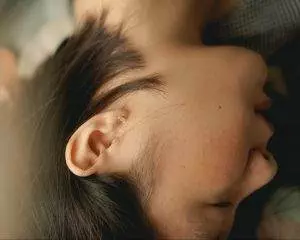
The preferred treatment for BPPV is usually a canalith repositioning procedure (CRP) can be done with one of a few different maneuvers that doctors can perform to try to move the particles in the inner ear that are causing BPPV. These are often helpful in the short term to relieve vertigo, but often patients do have a recurrence of BPPV symptoms again.
For some people, repositioning is not a good option—if you have problems with your cervical spine, or serious cardiovascular problems, for example.
Acupuncture and TCM offer an alternative treatment for BPPV that can relieve dizziness and other vertigo symptoms without any unwanted side effects.
Can Acupuncture Help BPPV?
According to TCM theory, phlegm is one of the pathogenic forces that can take hold in the body, along with things like dampness, dryness, etc. Phlegm builds up when fluids in the body are not being transported and moving the way they should; they get caught in an area and become condensed and thick, causing blockages of energy and movement.
The San Jiao, or “triple burner,” is an important concept used in TCM theory; the San Jiao controls the movement of fluids in the body. In cases of vertigo, phlegm and heat become stagnant due to the malfunctioning of the Jiao. This causes phlegm to be pushed upwards in the body.
In TCM, we may diagnose BPPV and other vestibular problems as having their root cause in a buildup of phlegm in the head that is causing a blockage in the inner ear.
Wind is another pathogenic force that can get into the body and cause problems that seem to come and go. Some cases of dizziness may be due to wind in the head.
Thus, the TCM protocols for BPPV treatment will aim to clear dampness, phlegm, and wind, and get fluids and Qi energy moving again.
Herbs can play an important role in treating vertigo. Chinese herb formulas that warm Yang energy and strengthen the kidneys and spleen can help to clear phlegm.
Use of specific acupoints with acupuncture treatment can help relieve vertigo—sometimes patients feel much less dizziness, even after one treatment. Not only can TCM treatment for BPPV help improve vertigo right away, but regular acupuncture session can help prevent bouts of dizziness from happening.
Acupuncture Near Me for BPPV in Los Angeles, Santa Monica
TCM is a great modality for helping to relieve dizziness due to all types of health conditions, including migraines, POTS, Ehlers-Danlos Syndrome, Meniere’s disease, multiple sclerosis (MS), diabetes, sinus issues, ear infections, and the side effects of medications. Acupuncture can be an excellent alternative for vertigo if other treatments have not helped. Dr. Tan and Dr. Cai at Art of Wellness in West L.A. can help get to the bottom of recurring dizziness, so you can feel steady again.
*This article is for education from the perspective of Traditional Chinese Medicine only. The education provided by this article is not approved by FDA to diagnose, prevent, treat and cure human diseases. It should not stop you from consulting with your physician for your medical conditions. Traditional Chinese Medicine is based on Qi, which is an invisible force that usually cannot be observed by modern science. Because science focuses on testing ideas about the natural world with evidence obtained through observation, these aspects of acupuncture can’t be studied by science. Therefore acupuncture and Chinese herbs are often not supported by double-blind, randomized trials, and they are considered alternative medicine therapies in the United States.
How to Treat Ehlers Danlos Syndrome (EDS) With Acupuncture and TCM
By Qineng Tan, L.Ac., Ph.D. and Xiaomei Cai, L.Ac., Ph.D.

Joint hypermobility? Bone pain? Bruise easily? Thin skin? These can be signs of Ehlers-Danlos Syndrome (EDS), which is a connective tissue disease. Acupuncture and TCM can help relieve Ehlers Danlos symptoms.
EDS, sometimes referred to as Ehlers Disease, is a relatively rare genetic condition that causes people to have weak connective tissues. Most types of Ehlers-Danlos are inherited, meaning that a person’s parents carry a pathogenic variant of a gene. This genetic mutation affects the way the body makes collagen proteins.
What are connective tissue disorders? Connective tissues maintain the structure of the internal organs of the body, supporting them and holding them together. These include bones, muscles, fat tissue, blood vessels, and other tissues in the body. A connective tissue disorder occurs when there is something unusual about the way connective tissues are formed.
Connective tissue is made up of collagen and elastin. In Ehler’s disease, a genetic mutation causes problems with a person’s collagen production.
When a person has EDS tissue disorder, their body does not metabolize or process collagen normally, which can have a profound effect on the way tissues in the body develop, heal, and age over time. Ehlers-Danlos can affect a person’s skin, muscles, bones, cartilage, joints, blood vessels, or fat tissue.
EDS bears some similarities to another genetic condition known as Marfan syndrome, or Marfan connective tissue disorder. In Marfan’s syndrome, there is a problem with the fibrillin-1 gene, which affects the production of elastic fibers that help make up connective tissues in the body. People with Marfan syndrome tend to be taller, have long limbs, and may have heart problems or lung problems. Some Marfan symptoms may overlap with those of EDS, but they are two distinct disorders.
How Many Types of EDS Are There?
There are several different types of Ehlers-Danlos syndrome, caused by genetic changes that affect various connective tissues in the body.
Thirteen different types of EDS have been identified. The criteria for each type can help doctors diagnose people with Ehlers-Danlos, so that they can get the most complete understanding of their symptoms and needs. There is a lot of overlap between types, so a person may have symptoms that fit into several of these types of EDS.
13 Types of Ehlers-Danlos Syndrome (EDS) include:
- Hypermobile EDS (hEDS) – characterized by hypermobile joints, joint instability, and chronic joint pain
- Classical EDS (cEDS) – usually stretchy skin, “velvety” skin, fragile skin, scars easily
- Vascular EDS (vEDS) – bruises easily, fragile blood vessels, fragile organs that bleed easily, visible veins, varicose veins, thin skin, prominent eyes
- Periodontal EDS (pEDS) – bleeding gums, early tooth loss, missing permanent teeth, small teeth, smaller than usual jaw
- Kyphoscoliosis – or Kyphoscoliotic Ehlers-Danlos syndrome, curve of the upper spine causes a hunch, “floppy baby,” developmental delays, difficulties with walking
- Arthrochalasia – may involve hip dysplasia or deformity of the hip joint, dislocated hip, general joint instability, speech or reading problems, echolalia (repeating other’s speech), femoral hernia, or inguinal hernia
- Classical-like EDS (clEDS) – soft, stretchy skin, joint hypermobility with dislocations occurring, and frequent bruising
- Cardiac-valvular EDS (cvEDS) – severe heart valve problems, thin skin, joint hypermobility
- Dermatosparaxis EDS (dEDS) – extremely fragile skin, loose skin, extra folds of skin, severe bruising, hernias of internal organs
- Brittle Cornea Syndrome (BCS) – thin corneas that may rupture
- Spondylodysplastic EDS (spEDS) – shorter than average stature, bowed limbs, decreased muscle tone
- Musculocontractural EDS (mcEDS) – birth defects – clubfoot or adducted thumb, whites of eyes are a bluish color, testes do not descend, malformed ears, high palate, muscle weakness, delayed motor skills, scoliosis, narrow fingers, skin infections
- Myopathic EDS (mEDS) – muscle weakness, joint contractures, limited range of motion
Top 10 Symptoms of Ehlers-Danlos Syndrome
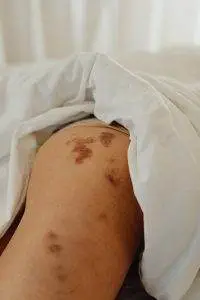
Signs of EDS vary widely, because there are several different types of Ehlers-Danlos, and because each individual will experience this syndrome differently.
Symptoms that common to many people with EDS include:
- Joint instability, “loose” joints, hypermobile joints, hyperflexibility, “double jointed”
- Thin skin, stretchy skin
- Bruises easily, bruises often
- Red marks on skin from impressions last a long time and are more prominent
- Scarring, wounds take a long time to heal
- Joint pain
- Muscle pain
- Bone pain
- Fatigue, tired all the time
- Difficulty concentrating
- Heart murmur, problems with “floppy” heart valves
- Dizziness when standing up (similar to POTS, may occur concurrently with POTS)
- Double follicles, multiple hairs growing from one follicle
- Brittle nails
People with hypermobility EDS may also experience urinary incontinence, constipation, heartburn/acid reflux, and high blood pressure.
People with EDS are often observed to have certain characteristic facial features, including: large eyes, small eyebrows, a thin nose, prominent cheekbones, and small or no earlobes.
Some people have hypermobile joints, which can cause pain and other problems, but do not have any of the other symptoms of EDS.
Treatment for Ehlers-Danlos Syndrome
Unfortunately, many people have a difficult time getting a diagnosis of EDS. Because the symptoms often show up in so many different organ systems and parts of the body, it can be confusing for health care providers to figure out what is going on. Patients will often be diagnosed with conditions like chronic fatigue syndrome or fibromyalgia instead of a connective tissue disorder.
There is no set medical treatment protocol for patients with EDS. If a person is having cardiovascular symptoms, they may be prescribed medications like beta blockers to manage blood pressure and heart rate.
People with EDS who have hypermobile joints may be recommended for physical therapy, occupational therapy, and/or cognitive behavioral therapy. to help them maintain stability and prevent dislocations. Wearing braces to protect joints may be recommended, as well.
Chronic pain may be helped with pain medications or kinesio-taping.
Acupuncture and other TCM treatments can be effective as an alternative treatment for Ehlers-Danlos, by helping to manage chronic pain and also addressing other symptoms of EDS.
Can Acupuncture Help Ehlers-Danlos Syndrome?
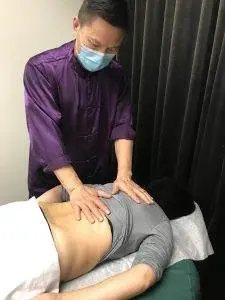
TCM is an excellent modality for treating complex syndromes and autoimmune disorders because it is a holistic form of medicine that takes the whole person into consideration, addressing myriad symptoms that may seem unrelated in the context of conventional medicine.
Many, if not most, people suffering from EDS, have probably struggled to find doctors who are willing to listen and acknowledge their condition. TCM practitioners are trained to observe carefully and look at the whole picture. They typically spend much more time listening and asking questions so that they can understand all of the different symptoms a person is experiencing. This, in itself, can help people with difficult-to-treat conditions feel heard and validated.
Acupuncture treatment can not only help reduce pain sensations, but can actually help to stimulate muscles and connective tissues, reducing inflammation and toning the muscles to help improve joint stability. Acupuncture can help to facilitate the healing of old injuries or wounds that cause chronic pain because they have never been able to heal completely.
Acupuncture treatment has been shown to have a positive effect on connective tissues; the rotation and manipulation of the fine acupuncture needles directly stimulates cells beneath the skin.
Other TCM modalities, like Tuina massage, can also promote relaxation and stimulate muscle tone.
Acupuncture can help to improve sleep quality and mental health, relieving symptoms of anxiety and depression.
Acupuncture can help to treat many different connective tissue disorders besides EDS, including:
Acupuncture Near Me for Ehlers-Danlos Syndrome – Los Angeles
Acupuncture can be used as an adjunct or alternative treatment for EDS and many other difficult-to-treat conditions, like autoimmune diseases and connective tissues disorders. Drs. Tan and Cai at Art of Wellness Acupuncture and TCM in West L.A. have over 30 years of experience helping patients with chronic pain conditions, muscle weakness and pain. If you or someone you know has been diagnosed with EDS or suspect you may have Ehlers-Danlos, please consider scheduling an appointment for an in-depth consultation. We can help.
*This article is for education from the perspective of Traditional Chinese Medicine only. The education provided by this article is not approved by FDA to diagnose, prevent, treat and cure human diseases. It should not stop you from consulting with your physician for your medical conditions. Traditional Chinese Medicine is based on Qi, which is an invisible force that usually cannot be observed by modern science. Because science focuses on testing ideas about the natural world with evidence obtained through observation, these aspects of acupuncture can’t be studied by science. Therefore acupuncture and Chinese herbs are often not supported by double-blind, randomized trials, and they are considered alternative medicine therapies in the United States.
How to Treat Hashimoto’s Disease With Acupuncture and TCM
By Qineng Tan, L.Ac., Ph.D. and Xiaomei Cai, L.Ac., Ph.D.
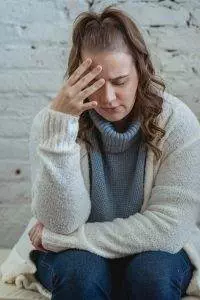
Goiter, enlarged thyroid? Tired all the time, feeling weak, sensitive to cold? Constipation, weight gain, hair loss? These can all be hypothyroidism symptoms. Hashimoto’s disease is an autoimmune disorder that causes low thyroid symptoms. Acupuncture and TCM can offer an alternative hypothyroidism treatment and address Hashimoto’s thyroiditis symptoms.
Recent data shows that hypothyroidism is fairly common. In the U.S., where it was previously thought that about 5% of the population may have some signs of hypothyroidism, more recent research shows that that number is over 10%. While people of all ages can have signs of hypothyroidism, it is most common among women over 50.
The thyroid and the pituitary gland work to release various thyroid hormones that control metabolism and other processes. The primary thyroid hormones are thyroxine (T3) and triiodothyronine (T4); Thyrotropin (TSH) is the hormone that stimulates the production of T3 and T4.
The normal TSH level for most adults is in the range of 0.27 – 4.2 uIU/mL. Lower TSH levels are often a sign that the body is producing too much thyroid hormone, which leads to symptoms of hyperthyroidism, which is often due to Graves disease, which is also an autoimmune thyroid disorder.
When TSH levels are high, there is probably too little thyroid hormone, or low thyroid hormone levels. Hypothyroidism is considered “overt” when a person has high TSH levels and low T4 levels. A person is considered to have subclinical hypothyroidism when their TSH is elevated, but T4 is in the normal range.
Hashimoto’s disease, also known as chronic thyroiditis, is the most common cause of hypothyroidism, but because it is a slowly progressing autoimmune disorder, it can take years for symptoms for thyroid to show up.
Hypothyroidism causes, or risk factors for Hashimoto, include: genetics, changes in hormones during pregnancy, and the presence of other autoimmune diseases. It is possible to have Hashimoto’s thyroiditis and also have another autoimmune condition, such as Rheumatoid arthritis, Celiac Disease, Lupus, or Type 1 Diabetes.
In some cases, hypothyroidism can be caused by an iodine deficiency in the diet. This is rare in the U.S., though, and iodine supplementation is not helpful in cases of hypothyroidism that are not caused by a lack of iodine.
Acupuncture and TCM are excellent modalities for treating all kinds of autoimmune disorders, because they work holistically to treat both the root causes of the problem, and hypothyroid symptoms.
Top 10 Hashimoto Disease Symptoms
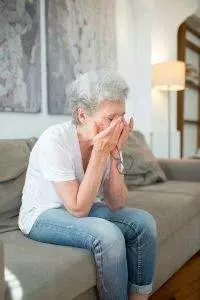
Signs of thyroid issues can take a long time to become severe enough that people notice them and seek diagnosis and treatment. Hypothyroidism symptoms can just seem like “normal” fatigue or other signs of aging.
Sometimes when people visit their primary care doctor, and they run a typical panel of blood tests, thyroid hormone levels are still in the normal range, so no treatment is recommended.
However, hypothyroidism symptoms typically come on gradually, and will likely get worse with time, as the disease progresses.
Hashimoto’s Disease Symptoms include:
- Fatigue, sluggishness, tired all the time
- Drowsiness, sleepy all the time
- Increased sensitivity to cold, feel cold all the time
- Dry skin, brittle nails, hair loss, puffy face
- Muscle pain, muscle stiffness, muscle weakness, joint pain, stiff joints
- Swollen thyroid, enlarged thyroid gland, goiter, swollen tongue
- Memory problems, difficulty concentrating, foggy head
- Change in menstrual cycle, irregular menstruation, heavy bleeding during period
- Weight gain
- Depression, mental health problems
If hypothyroidism is not treated, it can lead to serious complications. These may include: heart problems or cardiovascular diseases, like irregular heartbeat (arrhythmia) and high cholesterol.
Hashimoto’s can cause problems with sexual function, libido, and fertility in both men and women.
In rare cases, people with untreated low thyroid levels can develop Myxedema. Myxedema is the term for advanced, severe hypothyroidism, which can lead to:
- Low blood pressure
- Low heart rate
- Low blood sodium levels
- Low blood oxygen levels
- Low body temperature (hypothermia)
- Mental confusion
In extreme cases, Myxedema can lead to a health crisis in which a person may go into shock, a coma, or seizures. Myxedema crisis requires immediate emergency care.
Hypothyroidism can develop slowly, with minimal symptoms. However, it is important to get proper diagnosis and treatment for Hashimoto’s thyroiditis. As time goes on, untreated hypothyroidism can lead to more complications.
Medical Treatment for Hashimoto’s Disease
Getting a diagnosis for Hashimoto’s disease will usually involve a series of blood tests. As an autoimmune disorder, Hashimoto involves the production of antibodies that mistakenly attack healthy cells. In the case of Hashimoto’s thyroiditis, an antibody test may show that the immune system is making TSO antibodies. Thyroid peroxidase (TSO) a protein that is vital to the production of thyroid hormone.
In addition, blood tests will show if there is elevated TSH and/or low levels of T4. If a person has symptoms, or an enlarged thyroid gland, and high TSH levels, then a diagnosis of Hashimoto’s may be made, whether or not the T4 levels are low.
An ultrasound can indicate that there is swelling or inflammation in the thyroid gland.
Hypothyroidism Medication
The usual treatment for Hashimoto’s disease is hormone replacement. Levothyroxine, under the brand names Levoxyl, or Synthroid, is usually given in pill form. This hypothyroid medication mimics the action of T4 hormone.
For many patients, medications for low thyroid will help to stabilize the TSH and T4 levels, and symptoms will improve. However, for some people, the continued autoimmune disorder process continues to cause symptoms, even when thyroid hormone levels are in the normal range.
In these cases, doctors may recommend surgery. A thyroidectomy involves the removal of some or all of the thyroid gland. After a thyroid surgery, a person will need to continue taking thyroid hormone replacement medication, as they will not produce any without the thyroid gland.
Acupuncture and TCM treatment offer an alternative or adjunct therapy for Hashimoto’s disease, which can help improve immune function and address symptoms.
Can Acupuncture Help Hashimoto’s?
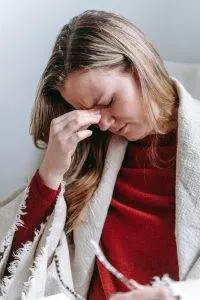
Acupuncture works by harmonizing the Qi (life force energy) of the organ systems of the body. When Qi is out of balance, then some bodily processes happen in excess, and others are deficient. A TCM practitioner observes and listens carefully to each person’s individual experience of symptoms to discover which organs are out of balance.
In the case of hypothyroidism and Hashimoto’s, deficiency of Qi and blood can be building up over a long period of time, and gradually begin to impact organs: mainly, the kidneys, spleen, and heart.
For a while, while the condition is still what conventional medicine considers to be subclinical hypothyroidism, the spleen Qi is weak, and causes some symptoms, like weakness and fatigue.
Then, as the situation progresses, the kidney Qi is affected, and more symptoms begin to occur. Yang Qi is not able to warm the organs enough, so dampness and cold begin to accumulate. This causes symptoms like constipation, swollen joints, brain fog, and memory problems.
Chronic kidney and liver qi deficiency can cause menstrual problems, and infertility.
If the problem continues, then the heart is affected, too, and cardiovascular symptoms begin to arise, like palpitations, respiratory problems, and low blood pressure.
The acupuncturist deduces from the pattern of symptoms which organs are affected, and then uses acupuncture treatment, herbs, and other modalities like cupping or moxibustion to bring more energy to depleted areas and help nourish them.
Can TCM cure hypothyroidism? Not exactly, but research has shown that acupuncture is a safe and effective treatment for thyroid disorders, whether it is used as an alternative medicine for Hashimoto’s disease, or as an adjunct therapy.
Case studies have shown that regular acupuncture treatment can help stabilize thyroid hormone levels, slow the progression of the autoimmune disease, reduce symptoms, and improve quality of life.
For those who are trying to conceive and are struggling with infertility issues due to thyroid disorders, acupuncture can be a holistic treatment that helps balance hormones and improve fertility. Acupuncture treatment may help prevent miscarriage due to autoimmune conditions.
Acupuncture can also be helpful for pain management after a thyroidectomy procedure.
Acupuncture Near Me for Hashimoto’s Disease – West Los Angeles Area
Acupuncture is an excellent modality for helping to treat many autoimmune diseases and thyroid conditions, including Graves disease, hyperthyroidism, and chronic fatigue syndrome. TCM can also help with menopause and perimenopausal symptoms, which often occur concurrently with hypothyroidism in women over 50. Acupuncture can also help with all kinds of mental health problems like depression and anxiety, which may be related to underlying physical conditions.
*This article is for education from the perspective of Traditional Chinese Medicine only. The education provided by this article is not approved by FDA to diagnose, prevent, treat and cure human diseases. It should not stop you from consulting with your physician for your medical conditions. Traditional Chinese Medicine is based on Qi, which is an invisible force that usually cannot be observed by modern science. Because science focuses on testing ideas about the natural world with evidence obtained through observation, these aspects of acupuncture can’t be studied by science. Therefore acupuncture and Chinese herbs are often not supported by double-blind, randomized trials, and they are considered alternative medicine therapies in the United States.
How to Treat Graves Disease With Acupuncture and TCM
By Qineng Tan, L.Ac., Ph.D. and Xiaomei Cai, L.Ac., Ph.D.
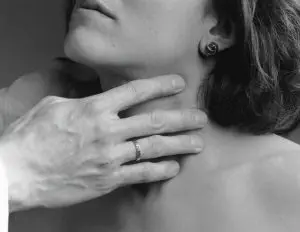
Goiter? Bulging eyes? Red eyes, eye pain? Feeling anxious and irritable? Hand tremor? These can all be signs of Graves disease, an autoimmune disorder that causes hyperthyroidism. Acupuncture and TCM can help relieve Graves disease symptoms.
Graves disease is an autoimmune disorder in which the immune system creates antibodies that make the thyroid produce too much thyroid hormone. This is known as an “overactive thyroid,” or hyperthyroidism.
Many different conditions can lead to excessive levels of thyroid hormone, but Graves disease is the most common cause of hyperthyroidism. About 80% of people with hyperthyroidism have Graves disease. Graves disease tends to affect women more often than men.
A person is more likely to have Graves disease if other people in their family have it, or have Hashimoto’s disease. People who have Graves may also have other autoimmune disorders, like Rheumatoid arthritis, autoimmune gastritis, Type 1 diabetes, or vitiligo (an autoimmune skin condition).
As with other autoimmune diseases, there is still limited understanding from a medical research perspective about what exactly causes Graves disease. Graves disease requires attention, as it can lead to serious health issues.
What Is Overactive Thyroid?
The thyroid gland is located in the front of the throat and is responsible for producing hormones that control metabolism, or how the body converts food into energy. The main thyroid hormones are thyroxine (T3) and triiodothyronine (T4).
The thyroid hormones impact many processes in the body, including your metabolic rate (how you use calories), how quickly food passes through your digestive tract, your heart rate, maintenance of body temperature, and the production of new cells to replace dying ones.
Thyroid function can have a big impact on your weight and digestion. Thyroid hormone imbalances can cause skin problems, vision problems, and problems with menstrual cycles, libido, and fertility.
Acupuncture can be an effective treatment for managing hyperthyroidism symptoms.
Top 10 Graves Disease Symptoms
Graves disease most typically begins to show up in midlife, between the ages of 30 and 50. Signs of Graves disease may develop slowly over several weeks or months. Each individual’s experience with symptoms may be different; you may have some of the following symptoms, but not others.
Common symptoms of Graves disease include:
- Rapid weight loss
- Increased appetite
- Diarrhea, more frequent bowel movements
- Rapid heartbeat, heart palpitations
- Feeling shaky, hand tremor, tremor in fingers
- Clammy skin, sweating, feeling hot
- Insomnia, trouble sleeping
- Goiter, enlarged thyroid gland on the front of the throat
- Changes in menstrual cycle
- Muscle weakness
About a third of people with Graves disease will also develop Graves ophthalmopathy, or thyroid eye disease. This happens due to inflammation and swelling of the muscles and tissues around the eyes. This can happen in both eyes, or just one eye.
Graves disease eye symptoms can include:
- Bulging eyes
- Eyelids don’t close all the way
- Puffy eyes, swelling around the eyes
- Eye pain, eye pressure
- Sensitive to light
- Eye irritation, gritty eyes
- Double vision
- Blurred vision
- Red eyes
- Trouble moving the eyes
Treatment for Graves Disease
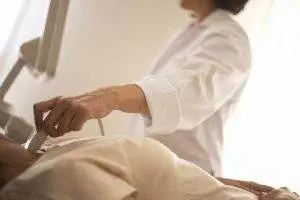
Diagnosis of Graves disease will usually involve blood tests to check for elevated thyroid hormones and the presence of antibodies that stimulate thyroid hormone production. A thyroid uptake scan will show how much iodine your thyroid absorbs; high absorption of iodine is a sign of Graves disease. A Doppler ultrasound may also be done to see if there is extra blood flow to your thyroid gland.
Graves disease is considered a chronic condition with no cure. However, medications and other interventions can help control thyroid hormone levels. Antithyroid medications like Tapazole block the overproduction of T3 and T4. Side effects of these medications can include itchy skin rashes, nausea, hair loss, muscle pain or joint pain, headaches, dizziness, and other problems. Some people can develop serious liver problems.
Radioiodine therapy, or radioactive iodine ablation (RAI), is a treatment for Graves disease that involves taking radioactive iodine, which, as it is absorbed by the thyroid, will destroy the overactive cells of the thyroid gland. Many patients who undergo this treatment will end up being hypothyroid (low thyroid levels) and will have to have thyroid hormone replacement treatment. RAI treatment can affect the salivary glands, causing dry mouth and sometimes a loss of the ability to taste.
A thyroidectomy is a surgical option, which involves the removal of some or all of the thyroid gland. This may be recommended if a person has a very enlarged goiter, or thyroid gland. As with RAI, this may require that a person takes thyroid hormone replacement in the future. There is a risk that the vocal cords can suffer damage during this procedure, which may affect a person’s voice long-term.
Acupuncture and TCM offers an alternative or adjunct treatment for Graves disease that can help address the root cause of hyperthyroidism as well as help to manage symptoms.
Can Acupuncture Help Graves Disease?
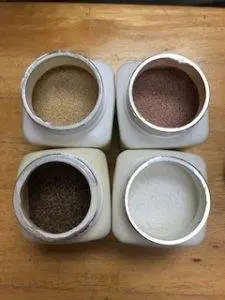
According to TCM theory, hyperthyroidism and Graves disease are related to imbalances in Qi: typically, yin deficiency is the result of excessive yang energy. Stagnation of phlegm in the liver meridian around the throat area can also have an impact on the thyroid gland.
Herbal formulations that help address liver qi stagnation can help relieve many of the symptoms associated with Graves disease, including palpitations, increased heart rate, and insomnia. Other Chinese herb treatments can help to reduce thyroid hormone levels and even the size of an enlarged thyroid.
One study that compared patients who were treated with acupuncture and herbs versus those who were treated with antithyroid medications. Over 95% of the group who received TCM treatment had positive outcomes, while 73% of the group who were given medications saw positive improvement.
Another independent study showed a similar result, with some patients given acupuncture plus conventional medications, while another group received medication only. The acupuncture group had a 96% positive outcome, while the medication only group had a 64% success rate.
One case study of a woman who had tried antithyroid medications but had suffered from hives as a side effect had good results after taking TCM herbs. Her thyroid levels returned to normal and remained in the normal range even after she discontinued the herbs.
An overview of research shows that acupuncture and herbs have the potential to help patients with Graves disease and hyperthyroidism by lowering thyroid hormone levels, relieving stress, improving sleep, and relieving symptoms like tremors and muscle weakness, as well as IBS-like symptoms of diarrhea.
A TCM practitioner can also give personalized advice regarding dietary and other lifestyle changes that can further help to alleviate symptoms and strengthen Qi.
Acupuncture Near Me for Graves Disease in West Los Angeles
Acupuncture and herbal medicine can be excellent modalities for hard-to-treat disorders, because TCM offers a different lens through which we can see health issues like autoimmune disorders and hormonal imbalances. TCM treatments can strengthen a person’s health on the deepest levels, while also relieving a wide variety of symptoms. Acupuncture can be very helpful for thyroid disorders like Graves disease and hyperthyroidism, as well as Hashimoto’s thyroiditis (Hashimoto) and hypothyroidism.
*This article is for education from the perspective of Traditional Chinese Medicine only. The education provided by this article is not approved by FDA to diagnose, prevent, treat and cure human diseases. It should not stop you from consulting with your physician for your medical conditions. Traditional Chinese Medicine is based on Qi, which is an invisible force that usually cannot be observed by modern science. Because science focuses on testing ideas about the natural world with evidence obtained through observation, these aspects of acupuncture can’t be studied by science. Therefore acupuncture and Chinese herbs are often not supported by double-blind, randomized trials, and they are considered alternative medicine therapies in the United States.